Consistent hypertension causes various complications which impair life-span and health-span. Angiotensinogen, also known as AGT, is the sole precursor of angiotensin peptides in the RAAS pathway, which is the most carefully studied mechanism of blood pressure and volume regulation. RNAi therapies targeting AGT are promising approaches to treat hypertension and related organ damage. Given that the action of RNA interference drugs is based on the complementary base pairing, mouse models for preclinical evaluation of efficacy on AGT targets are limited. Early AGT humanized mice, generated by introducing the entire AGT gene into the Rosa26 locus, produced a large amount of human AGT, but the inability of rodent RENIN to convert human AGT to AngI prohibits the spontaneous development of hypertension. Therefore, we developed a modified human RENIN virus as a flexible tool to induce persistent hypertension. These novel hAGT humanized hypertension mice respond to Zilebesiran mediated hAGT knockdown with expected reductions in blood pressure.
Model Overview and Example Data
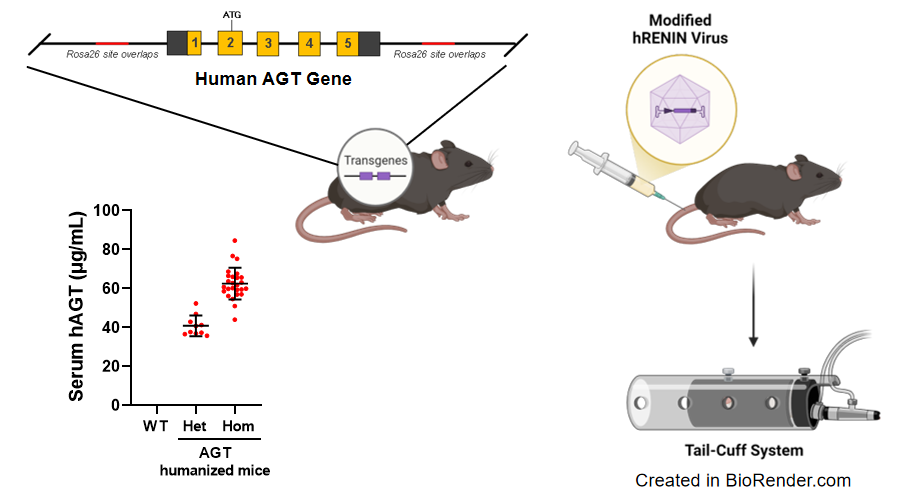
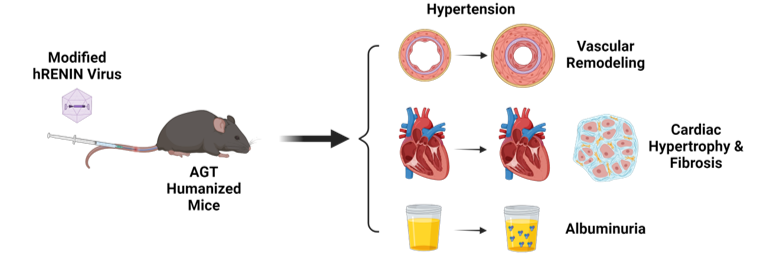
Validation Data
Persistent expression of hRENIN in AGT humanized mice
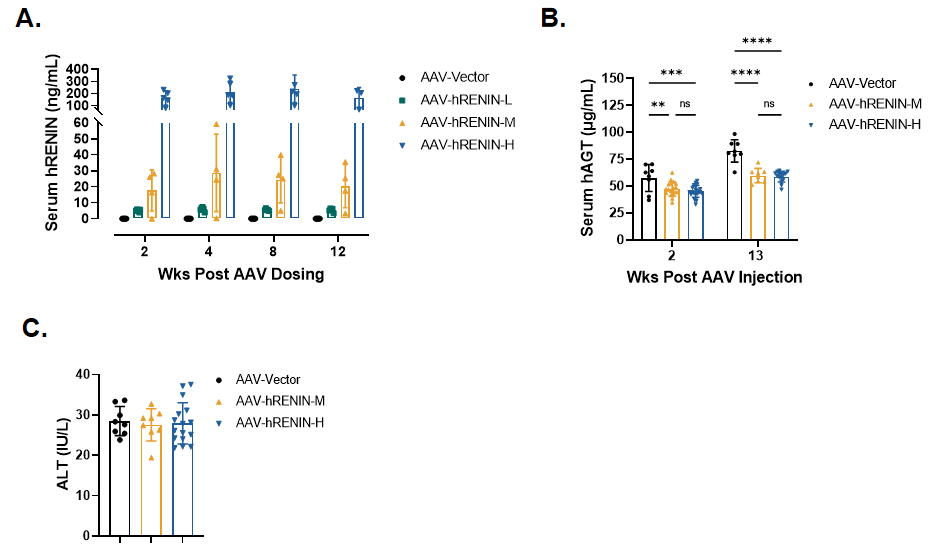
Figure 1. A) Virus mediated hRENIN expression in AGT-humanized mice is dose-dependent and the expression persists up to 12 weeks post virus injection. B) Medium dose of AAV-hRENIN achieves the upper limit of hAGT conversion. C) AAV-hRENIN transduction does not affect liver function. Data presented as Mean±SD. n=4~21. **: p < 0.01; ***: p < 0.001; ****: p < 0.0001 by one way ANOVA with Dunnett’s post hoc test.
Persistent hypertension in hRENIN virus-treated AGT humanized mice
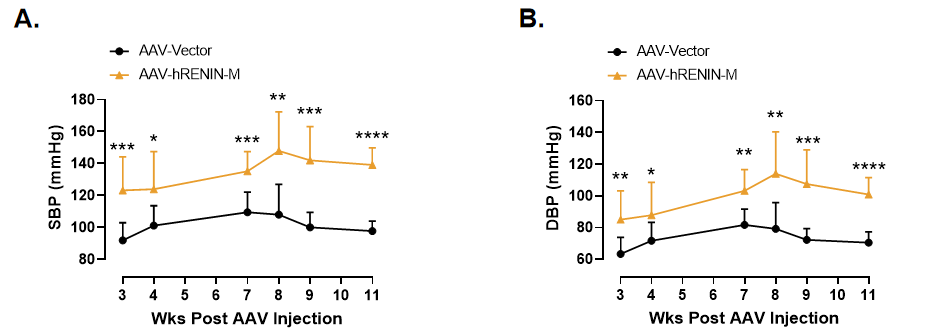
Figure 2. A) Systolic blood pressure after virus infection. B) Diastolic blood pressure after virus injection. Data presented as Mean±SD. n=8. **: p < 0.01; ***: p < 0.001; ****: p < 0.0001 by unpaired t-test.
Hypertensive AGT-humanized mice developed renal injury and cardiovascular remodeling
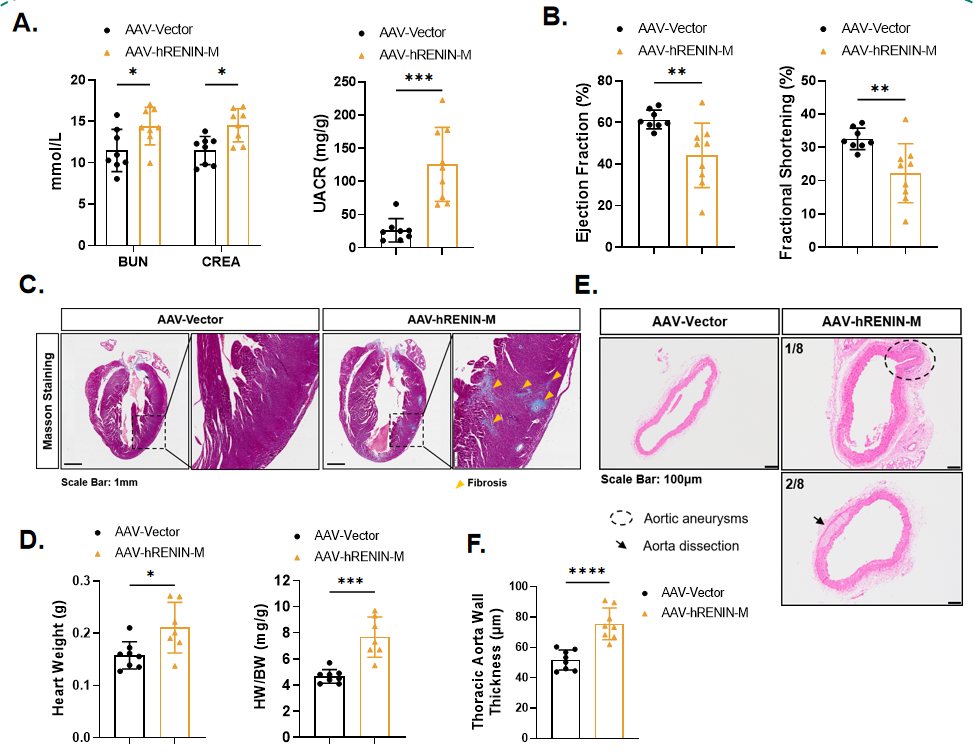
Figure 3. A) Hypertensive AGT-humanized mice show elevated BUN, CREA and UACR. B) Hypertensive AGT-humanized mice display declined ejection fraction and fractional shortening. C and D) Cardiac hypertrophy and fibrosis can be observed in hypertensive AGT-humanized mice. E and F. Hypertensive AGT-humanized mice show thickened blood vessels and developed aortic aneurysms and aortic dissection. Data presented as Mean±SD. n=7~8. *: p < 0.05; **: p < 0.01; ***: p < 0.001; ****: p < 0.0001 by one way ANOVA with Dunnett’s post hoc test.
Zilebesiran treatment reduces blood pressure and hypertension related complications of hypertensive AGT-humanized mice
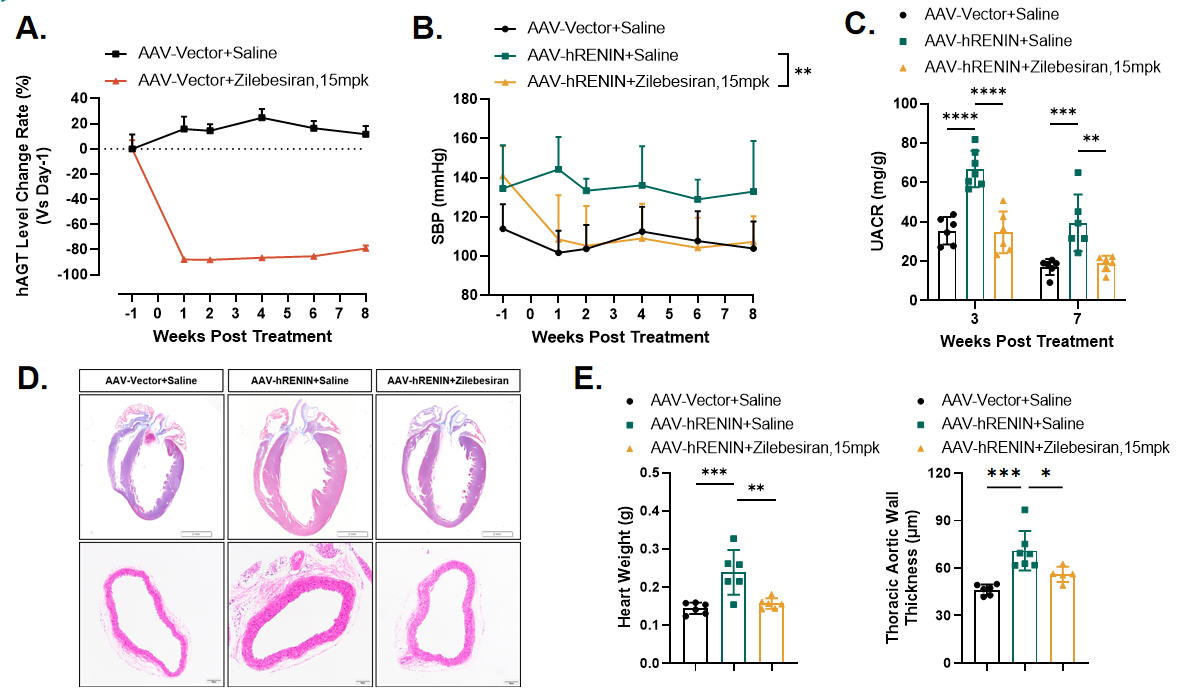
Figure 4. A) AGT knock-down efficiency of Zilebesiran in humanized mice. B) Blood pressure is significantly decreased upon single administration of Zilebesiran. C) Renal injury and heart remodeling is improved following a single dose of Zilebesiran. D and E) Cardiovascular remodeling is improved upon administration of a single dose of Zilebesiran. Data presented as Mean±SD. n=3~7. **: p < 0.01; ***: p < 0.001; ****: p < 0.0001 by one way ANOVA with Dunnett’s post hoc test.

